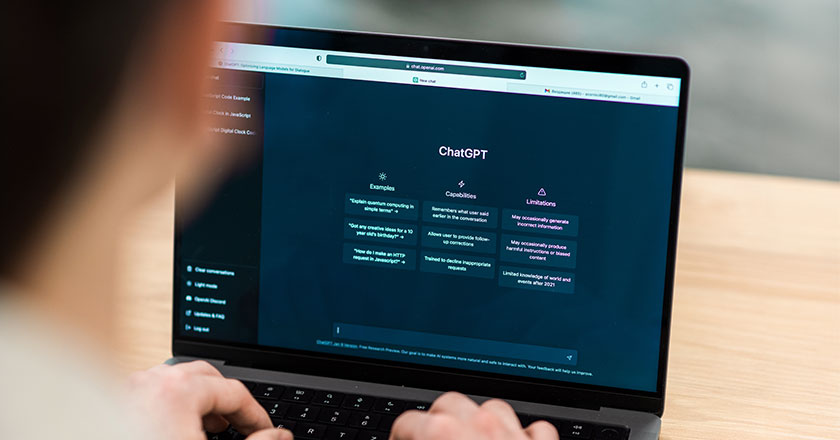When it comes to developing website content, many businesses now depend on generative AI tools like ChatGPT. Companies can use ChatGPT's abilities to come up with blog post titles, get a detailed blog post outline, or craft posts on social media platforms. ChatGPT's idea-generating capabilities help to enhance posts, streamline processes, and create content more efficiently..
However, to get the most out of ChatGPT, it's crucial to understand how to compose prompts that will result in relevant and accurate output.
In this article, we'll provide some insights on crafting ChatGPT prompts.
Step 1: Use a Formula to Create Prompts

While writing a ChatGPT prompt may sound easy, users must take context into account. While many new users assume that they can simply ask direct questions and receive a useful output, this is a misconception. In order to receive an ideal response for a specific topic, you will need to phrase your question in a specific manner, establish the parameters you want it to reply with, and provide additional information and relevant keywords that it may not be able to automatically find. This process is known as prompt engineering.
This makes a formula necessary for prompt-writing. The AI doesn't have any context for what we're seeking, and it doesn't know what frameworks or examples we might want it to follow. It won't know our target audience, or our intended tone, or whether it should use formal writing. In short, ChatGPT is only as useful as the clarity of the instructions it receives, making it vital to set up clear instructions for it.
That's why the first thing to do when planning out a ChatGPT prompt for a blog post is to find a specific step-by-step formula. With a set structure in place for future tasks, you will be able to continuously receive results of a similar quality.
Step 2: Make Use of Proven Frameworks

By employing reliable frameworks, we will be able to write stronger prompts with structure, clarity, and a sense of underlying logic. These frameworks contain best-practice standards and principles that can be applied to a variety of situations. Keep in mind that large blocks of AI-generated content are prone to meandering and repeating points in the absence of a defined structure. Therefore, it's critical to develop this structure when creating prompts.
One such framework is E.R.A., or Expectation, Role, Action. In this framework, the ChatGPT user expresses their expectations, establishes the role ChatGPT should play, and describes the actions they want ChatGPT to take.
An example of this would be:
I want a detailed and informative blog post about remote work. The tone should be professional and engaging. You are a knowledgeable business consultant with expertise in human resources and remote work policies. Provide a comprehensive outline for the blog post, including an introduction, main points, and a conclusion. Include real-world examples and statistical data to support the benefits of remote work.
By providing these frameworks, you can guide ChatGPT in producing high quality content, generated in a manner that's formatted to your liking and usable after manual editing.
Step 3: Use Iterative Methods to Improve Prompts

Once we've selected the most suitable formula and framework for our purposes, we can begin using iterative prompting to refine our prompts and improve outputs. This method involves continually refining the prompts we provide to an AI tool, and examining the output quality. Each response we get from the tool will give us a better idea of how to adjust the prompt further for a stronger, more relevant result.
A good first step for iterative prompting is to check the output of a broad prompt. Based on the first result, you should be checking for missing information or gaps in understanding, then edit the prompt to address areas for improvement. ChatGPT has a useful function that allows you to give prompt instructions through a conversation window, allowing it to list out your desired changes easily. The next version of the prompt should be more specific. Repeat the process of prompting, analysing the output, and refining the prompt until the output is up to standard.
In this iterative process, it might be helpful to try different styles of prompting. For example, provide the generative AI tool with questions or scenarios instead of instructions. Experimenting with prompt styles can steer us closer to the most effective prompts for our needs.
When the prompt we're working on consistently returns output we're happy with, it's time to try the prompt with other topics. This is to ensure that the prompt gives us reliable and consistent results across a variety of blog post ideas. After checking that the prompt will work for different blog content, we can start using it for content creation.
Iterative prompting can be a time-consuming process, but it is necessary to garner the best possible results. It is crucial to be adaptable and willing to engage in ongoing learning if we want to unlock the full capabilities of generative AI.
Improving Workflow with Generative AI

Blog writing has never been easier than it is with the help of generative AI. Following these steps and learning these methods will greatly improve the ease with which companies navigate generative AI, and aid your business in producing content that stands out from the competition—even with the same set of tools! Once employees master the skill of writing ChatGPT prompts that create the best content for their target audience, you'll be putting out blog posts that readers won't soon forget.
At Aventis Learning Group's course on Mastering ChatGPT, we share valuable insights on formulas, frameworks, and the best ways to improve on your prompts through iterative feedback. We aim to help you gain a comprehensive understanding of ChatGPT's capabilities, limitations, and use cases, so you can revolutionise your workflow. Supercharge your business' competitive edge and sign up today.

